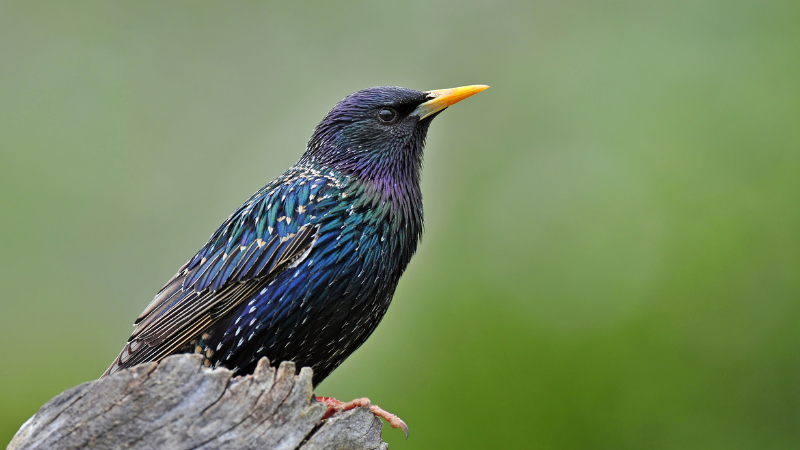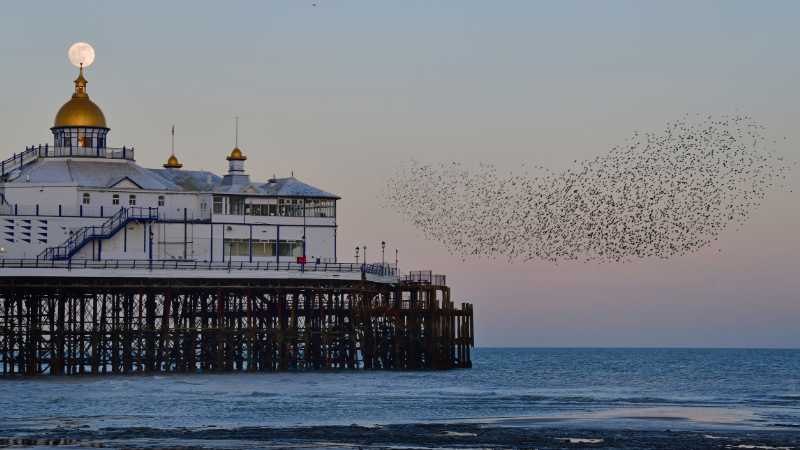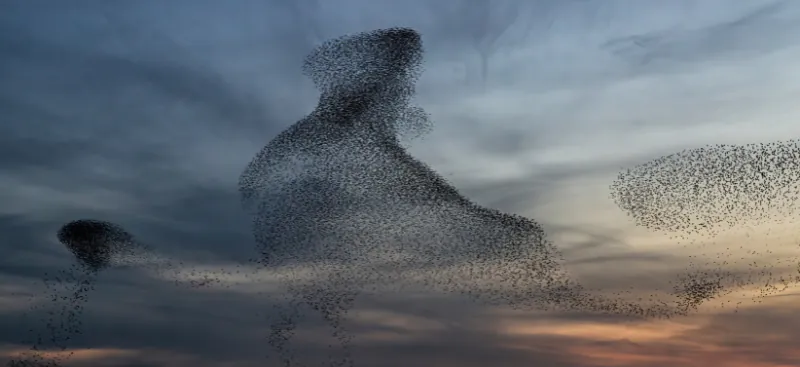Starling Murmuration: how, why, & when do they happen?
In the world of avian wonders, few sights are as captivating and mysterious as the starling murmuration. This breathtaking aerial ballet, performed by thousands of starlings, paints the sky with mesmerizing patterns and fluid movements. This blog delves into the enchanting world of starling murmuration, exploring the science, spectacle, and significance behind this natural phenomenon.
What is murmuration?
A murmuration is a remarkable behaviour exhibited by starlings, where thousands to millions of these birds fly together in close formation, creating intricate and fluid patterns in the sky. The patterns created are diverse and ever-changing. From undulating waves to twisting helixes, the fluidity and symmetry of starlings' movements are a breathtaking display of nature's precision.

When does starling murmuration occur?
In the UK, you'll have the best chance of seeing starling murmuration in autumn and winter, usually from October to March. Starling murmurations typically take place in the early evening, just before roosting for the night.
Where can I see starling murmuration UK?
You'll have a good chance of seeing starling murmurations around wetlands, coastal areas, and city centres.
Prime locations for viewing murmuration in the UK include:
- Shapwick Heath, Somerset
- Aberystwyth Pier, Ceredigion
- Brighton Pier, Sussex
- Leighton Moss, Lancashire
- Fen Drayton, Cambridgeshire
- Minsmere, Suffolk
- Gretna Green, Dumfries and Galloway
- Albert Bridge, Belfast
- Drumhoney Holiday Park, Lisnarick, County Fermanagh
- Newport Wetlands, Newport
- Whisby Nature Park, Lincolnshire
- Ellon, Aberdeenshire
- Attenborough Nature Reserve, Nottinghamshire

Why do starlings murmurate?
One of the primary purposes of murmuration is to protect against predators. By flying nearby and executing swift, unpredictable movements, individual starlings become much harder to target. Predators such as hawks and falcons encounter difficulty singling out a single bird amidst the hypnotising spectacle of a flock numbering in the thousands.
How do starlings perform murmuration?
The precision with which starlings move within a murmuration is a great scientific interest. Each bird pays close attention to its neighbours, adjusting its flight path based on their movements. This behaviour does not require vocal communication; the birds coordinate through visual cues.
The UK Starling Murmuration is a testament to the astonishing complexities of nature, captivating both seasoned birdwatchers and casual observers with its breathtaking aerial ballet. It serves as a reminder of the profound beauty of behaviour in our wildlife.
If you would like to attract these beautiful birds to your area and encourage a starling murmuration above your house, keeping a feeder full of sunflower seeds, suet balls, and peanuts is a great way to entice them in.

